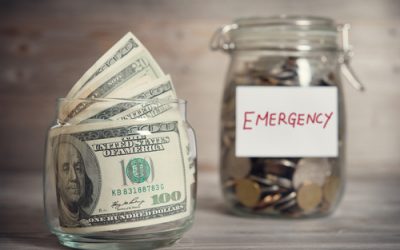
When your business is just starting out you burn through cash quickly. The early days are all about investing in operations, personnel, inventory, and technology. It may take some time for you to reach profitability. Once you do, it’s important to create an emergency fund for your business.
What is an emergency fund?
An emergency fund would cover your business operating expenses in the event of unforeseen circumstances. Most people have a personal emergency fund to cover loss of income or health. Your business can become victim to the same events. How much money would you need to have in accessible savings if you could no longer work? The general recommendation for business and personal emergency funds is enough to cover 3 months.
Why do you need one?
No one wants to be a black rain cloud dreaming up ways your business could fail, but there are any number of unforeseen expenses that could require you to tap into your emergency fund.
Bad business decisions can cause a small hiccup or can close your business. It helps to have a fund set aside to rescue your company.
Having an emergency fund allows you to take calculated risks. Investing in bulk inventory, renovations, or automation can be risky, so have the funds saved to support these decisions.

Lawsuits can cripple a business even if you are not at fault. If you don’t have a lawyer on retainer you will need to hire one. You may even decide to settle lawsuits out of court to save on legal fees.
While taxes should not be paid from your emergency fund, you may need to use emergency expenses to cover unforeseen tax expenses. In the event of an audit you may need to cover fees and unpaid taxes. There may be sudden changes in tax law and you could have fewer write-offs.
How much should you save?
Start by determining your monthly output. Business expenses fall into these categories:
- Operating expenses (inventory, rent/utilities, insurance, equipment, salaries)
- Tax payments
- Savings for large purchases
You will also need to cover liabilities, including business loan payments and credit card minimum payments. What does all that cost you per month? Whatever is left of your income can vanish quickly if you don’t put it away. Once you determine your monthly costs, you can create an emergency fund goal.
Ideally you want to save a minimum of 3 months’ expenses. Figure out how much you are comfortable with saving each month and how quickly you want to reach your goal. If you need an emergency fund of $10,000 and you’re only saving $100 a month, it will take you more than eight years to get there. If you decide you want to build up your emergency fund in one year, you’ll need to save $833 each month in this example.

How can you build your emergency fund quickly?
Once you have the monthly saving figure, set it and forget it. Set up an automatic investment plan to withdraw that amount each month. If you rely on manual withdrawals, you’re very likely to periodically forget.
If you want to turbo-charge your savings, enroll in a round-up savings plan. Many banks offer this service as do apps like Acorns, Chime, and Qapital. For each purchase you make, the bank will round-up the amount to the nearest dollar and deposit or invest the difference.
Invest the money in stable accounts so the fund grows on its own. Don’t gamble with your business’ future. Stay away from risky investments and stick with money market savings accounts where you can earn 2-2.5% interest.



